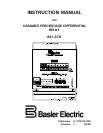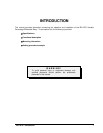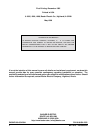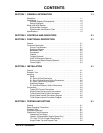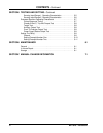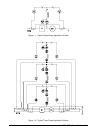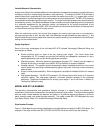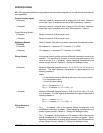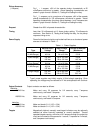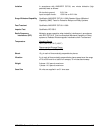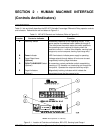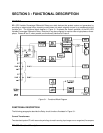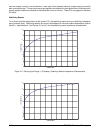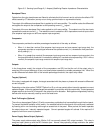
BE1-87G - General Information 1-3
Variable Restraint Characteristic
At high current levels, the inevitable difference in the saturation characteristics between current transformers
indicates a need for a compensating decrease in relay sensitivity. The design of the BE1-87G provides a
restraint factor that is proportional to input current when the restraining current (I
R
) is greater than nominal
(five amperes for sensing input type one or one ampere for sensing input type two). The BE1-87G compares
the protected zone sensed input and output currents. The lesser of the two sensed current levels becomes
the restraining current. The difference between the two sensed currents (the operating current) is compared
to a reference established by the sensitivity setting, and adjusted by an amount proportional to the
restraining current. This makes the BE1-87G more sensitive to low current internal faults, and less sensitive
to external faults with high levels of through current.
When the restraining current is at nominal (five amperes for sensing input type one or one ampere for
sensing input type two) or less, the relay trips if the differential current exceeds the relay setting (I
S
). But
when the restraining current is greater than nominal, the overall sensitivity is a combination of the front panel
setting and the restraint factor.
Design Highlights
Some of the many advantages of the solid-state BE1-87G Variable Percentage Differential Relay are
summarized as follows.
Seven sensitivity levels on each of the two sensing input ranges. The seven levels allow
compensation for CT mismatch and provide the flexibility and adaptability necessary for many
special applications such as split winding generator protection.
Stabilizing reactor. Minimizes dissimilar performance of system CTs. Reactor can be located on
the back of the relay or remotely from the BE1-87G for flexibility of system installation.
Variable restraint. The variable restraint characteristic allows increased sensitivity to low current
internal faults while providing increased security against high levels of through current caused by
external faults.
Single- or three-phase availability. Either configuration is available in the Basler Electric S1 drawout
case.
High-Speed Operation. The BE1-87G operates in 30 milliseconds for fault levels of 10 times the
sensitivity setting. This high-speed operation minimizes potential damage to the protected
equipment. Response characteristics for sensing input ranges 1 and 2 are shown in Section 5,
Testing And Setting
the relay.
MODEL AND STYLE NUMBER
The electrical characteristics and operational features included in a specific relay are defined by a
combination of letters and numbers which constitutes the device's style number. The style number together
with the model number describe the features and options in a particular device and appear on the front
panel, drawout cradle, and inside the case assembly. The model number BE1-87G designates the relay
as a Basler Electric Class 100, Variable Percentage Differential Relay.
Style Number Example
Figure 1-3 illustrates the style number identification chart with features and options for BE1-87G relays. For
example, if the style number were BE1-87G GlE AlJ AOCOF the device would have the following:



